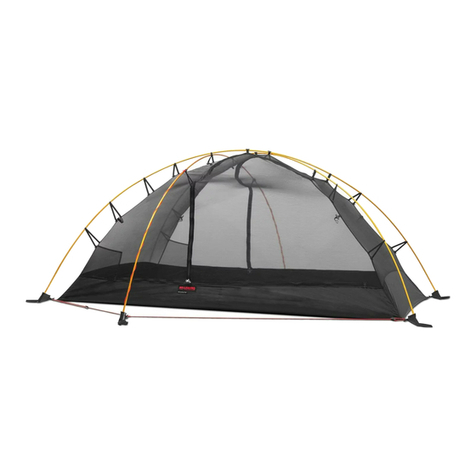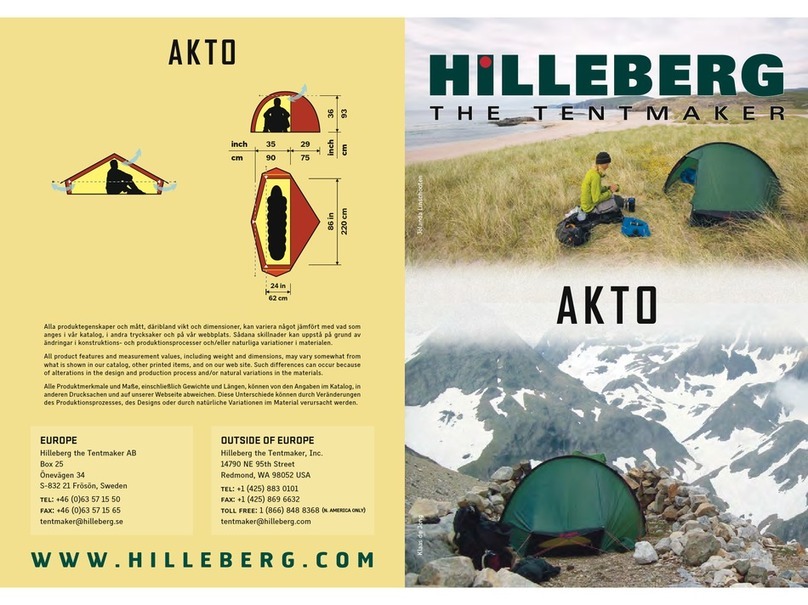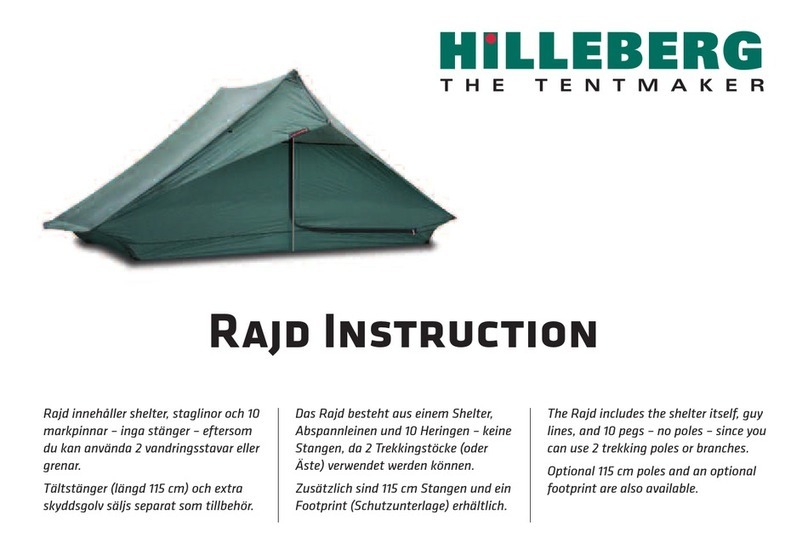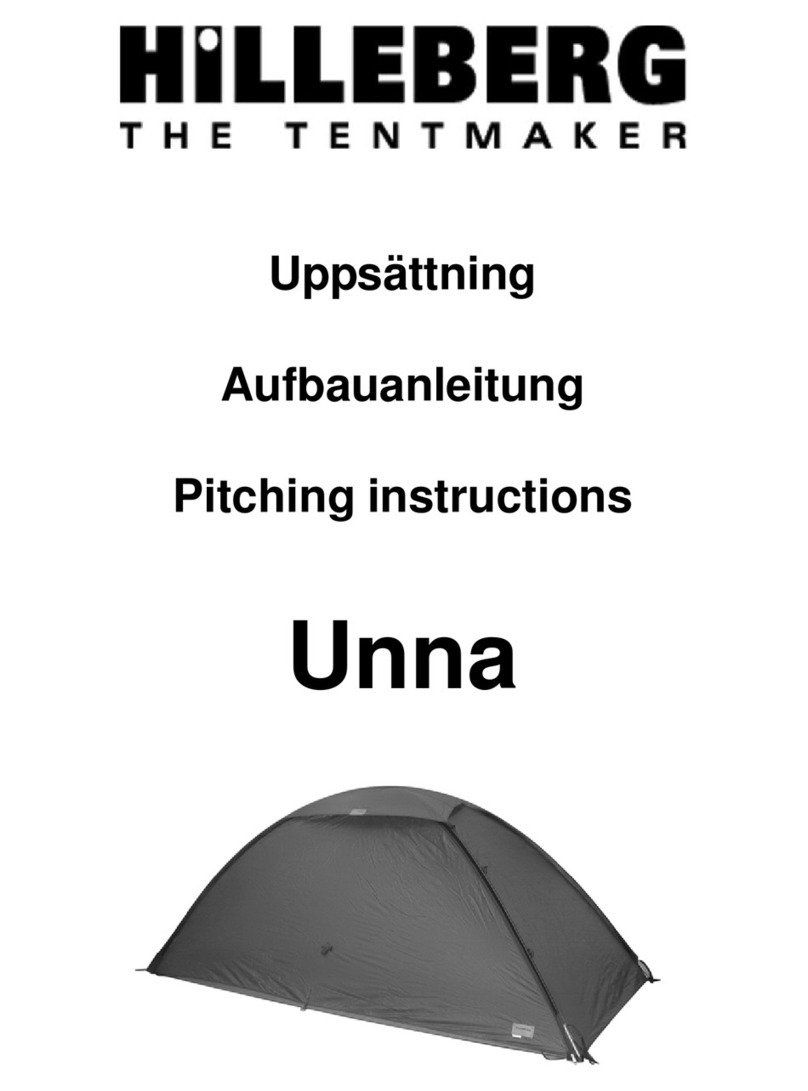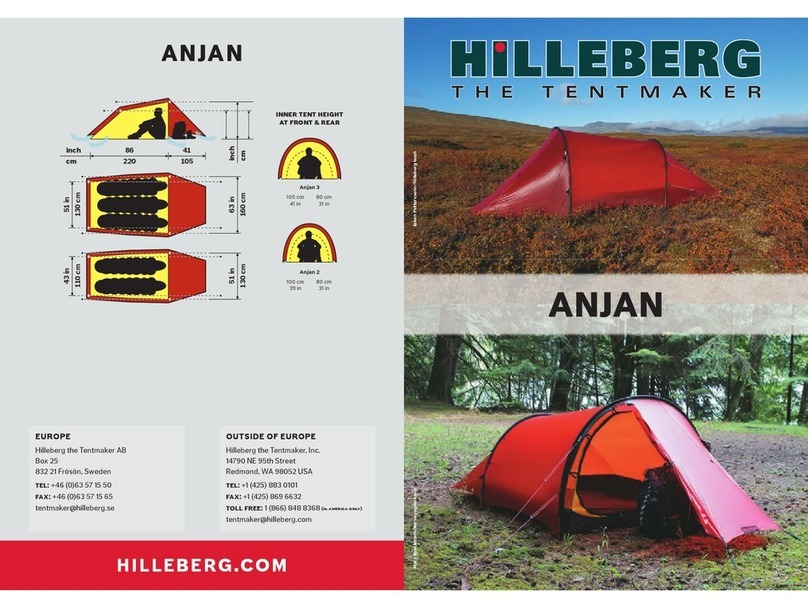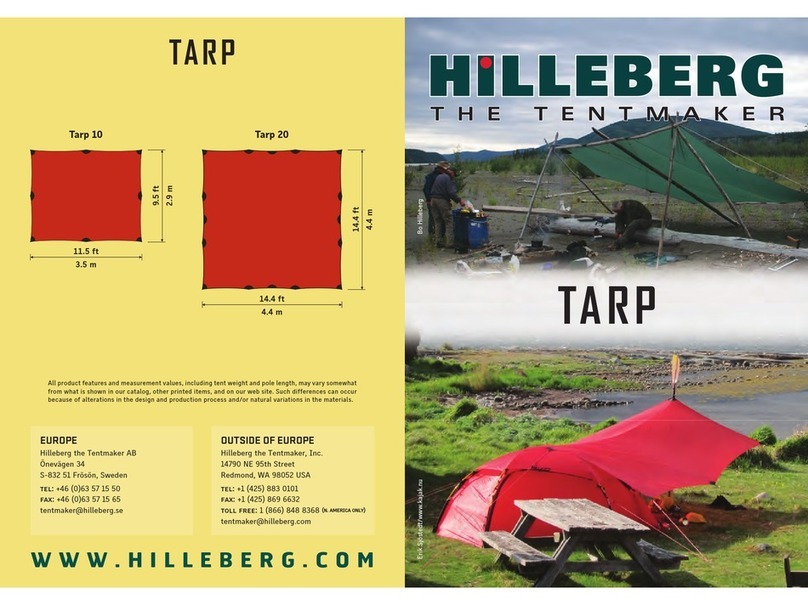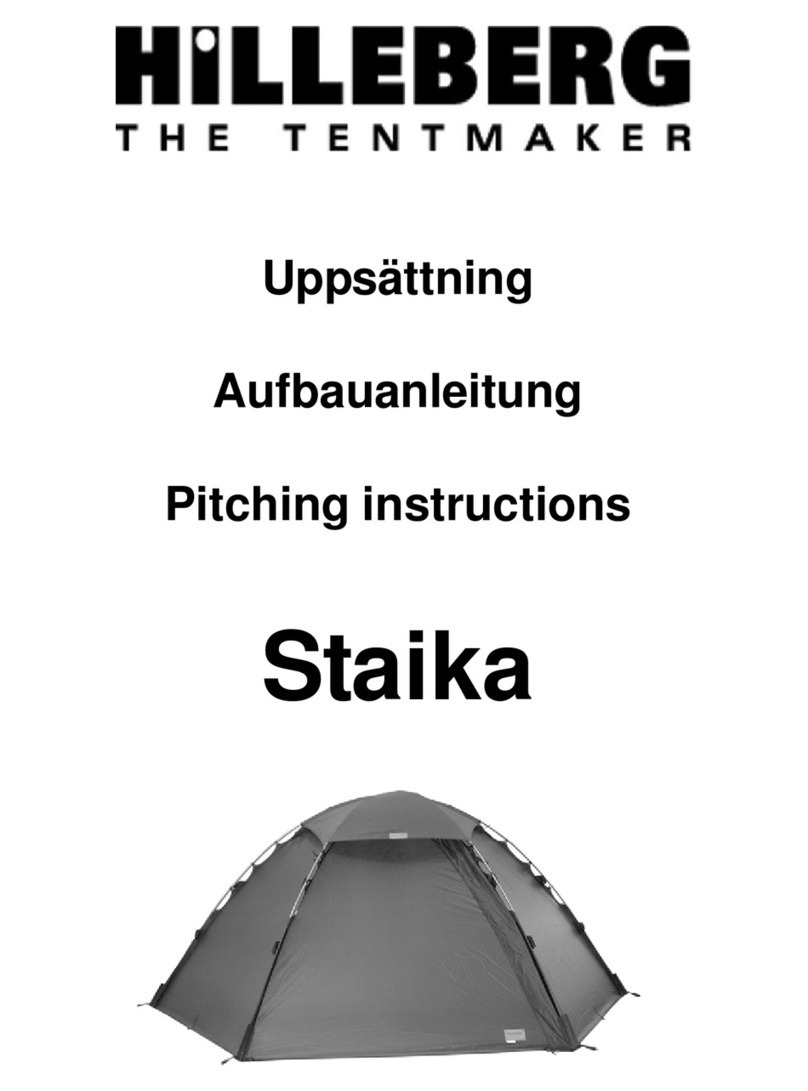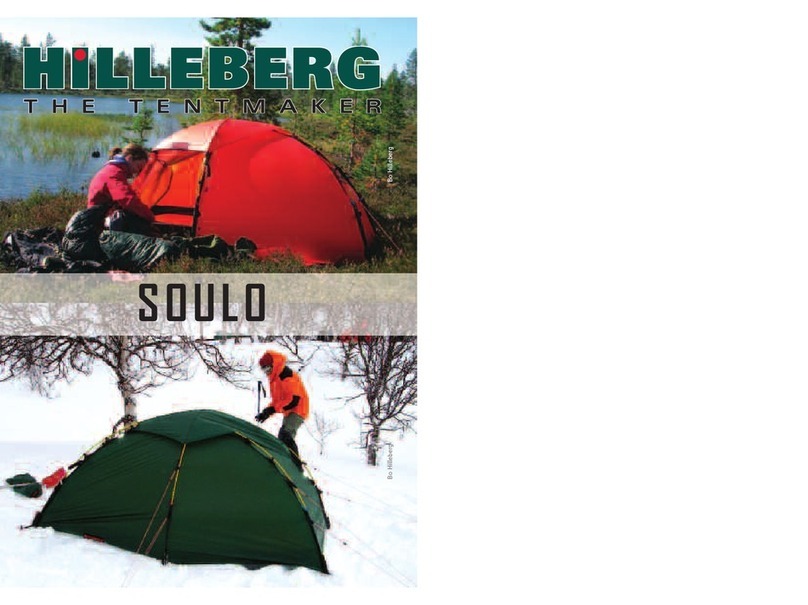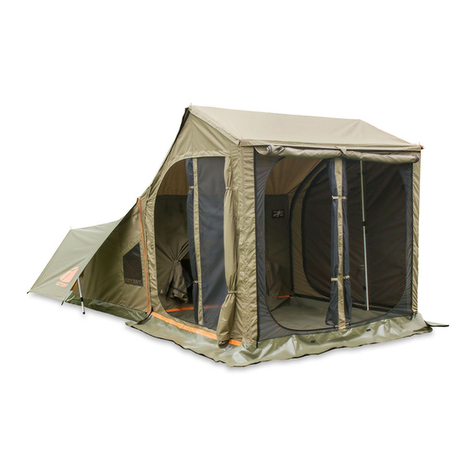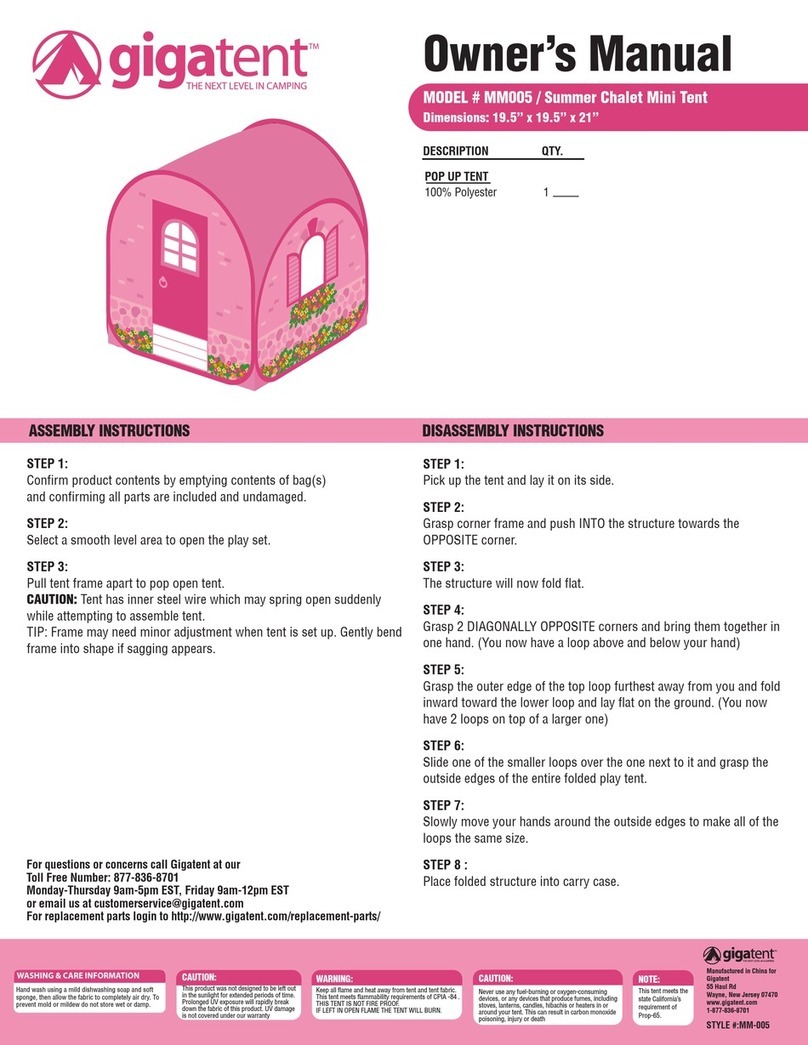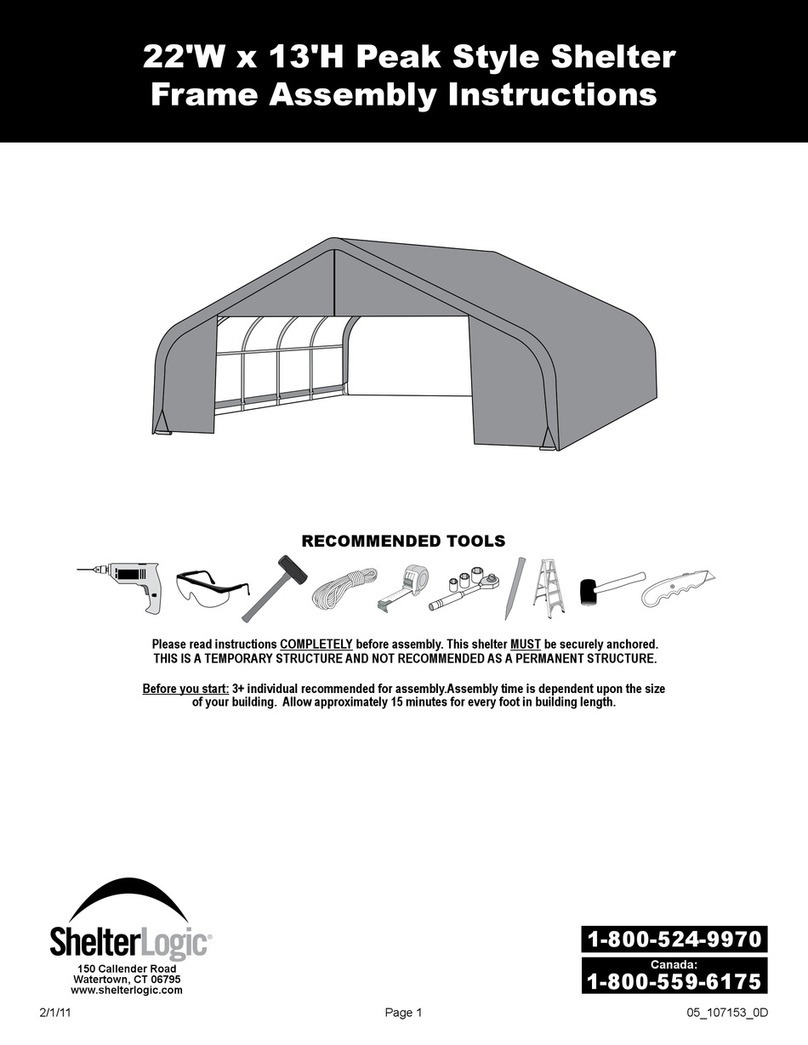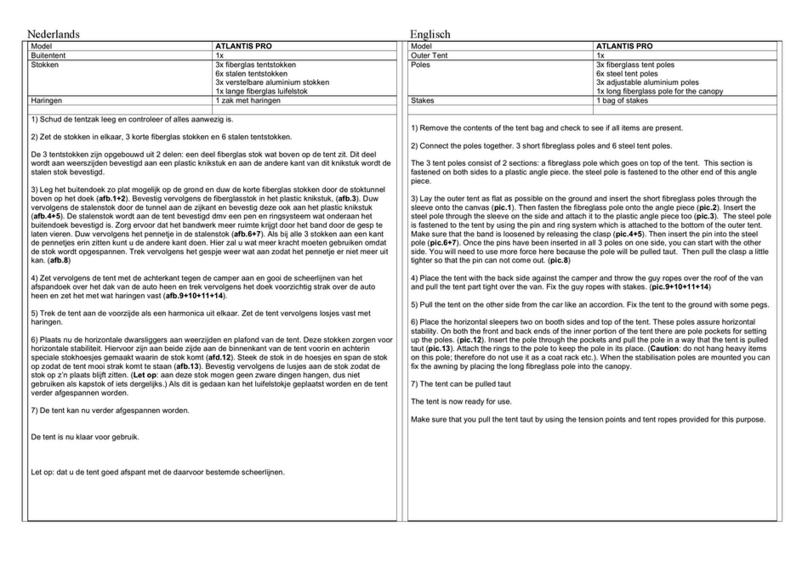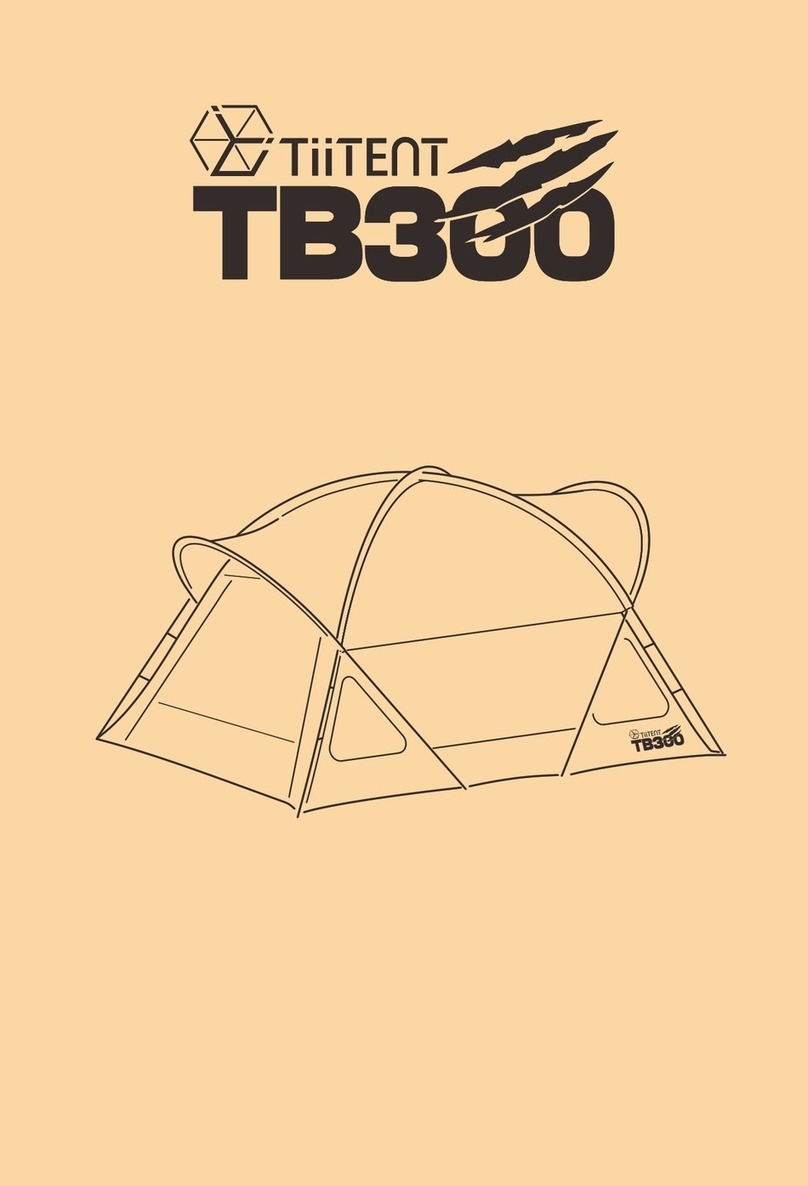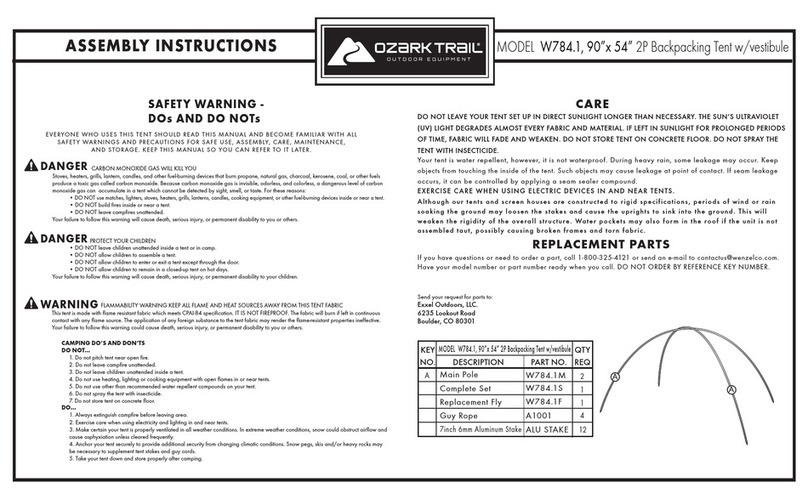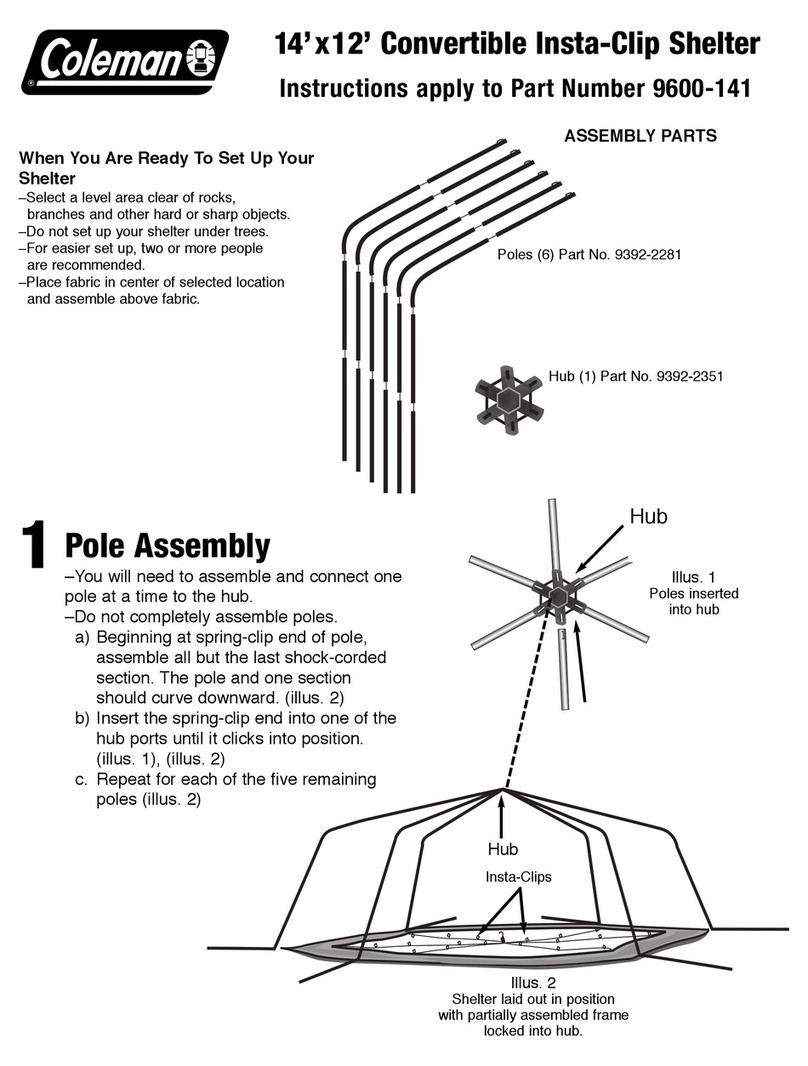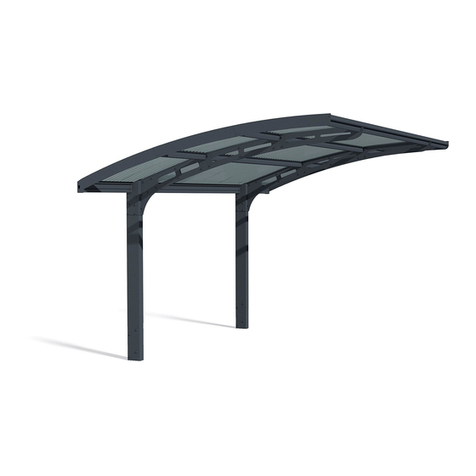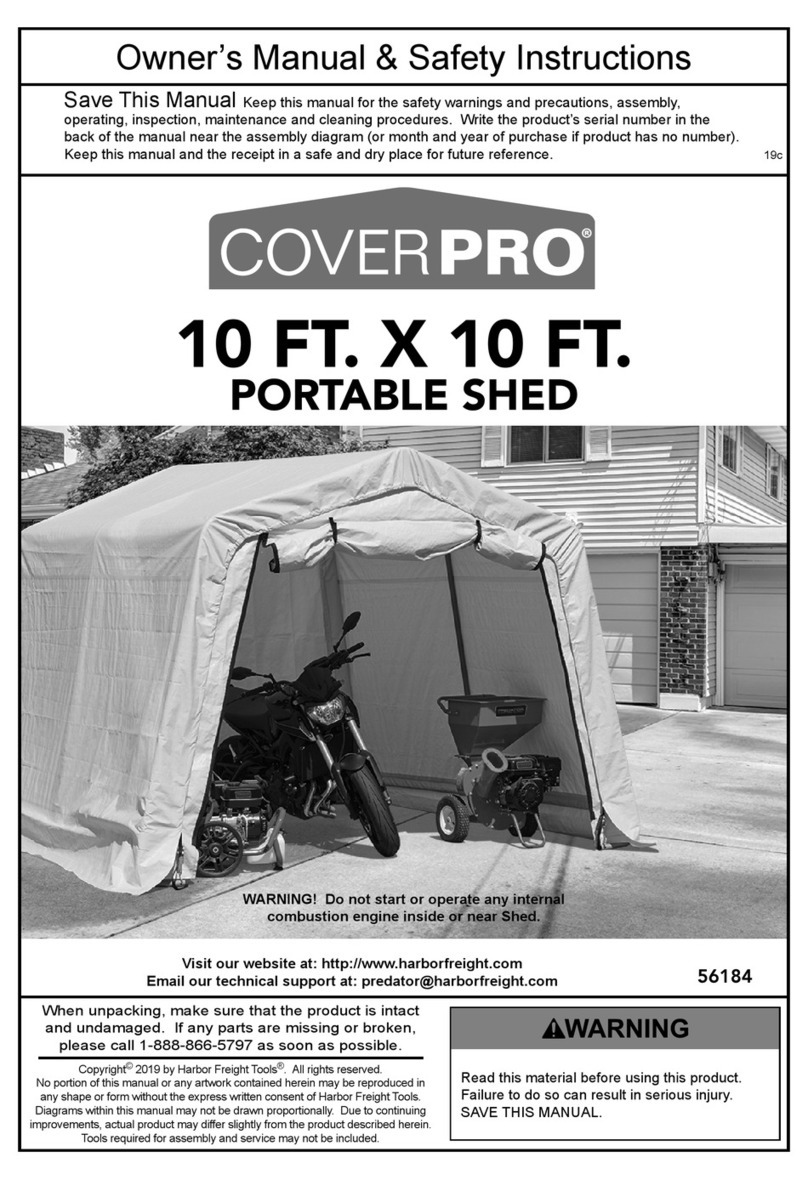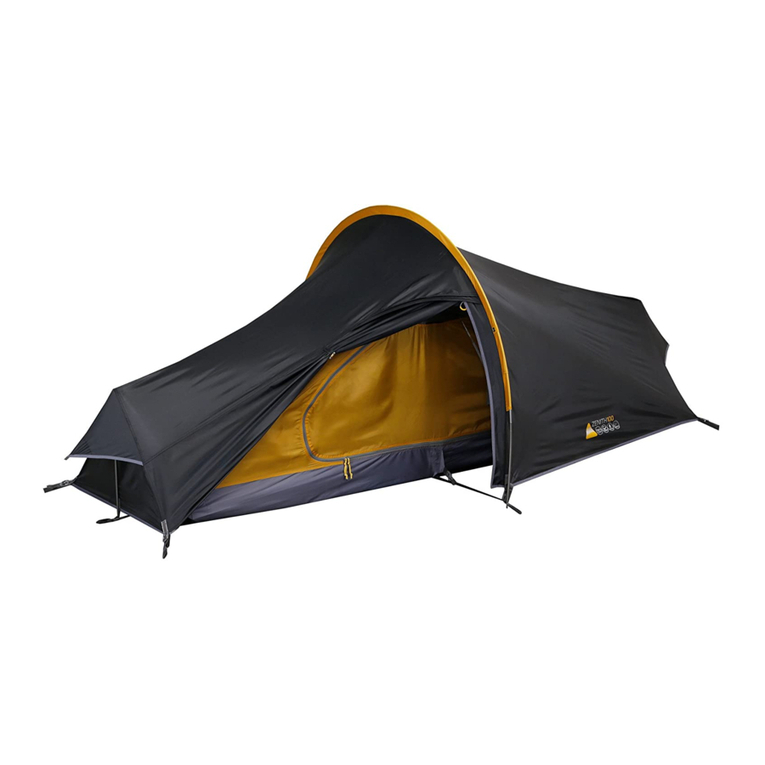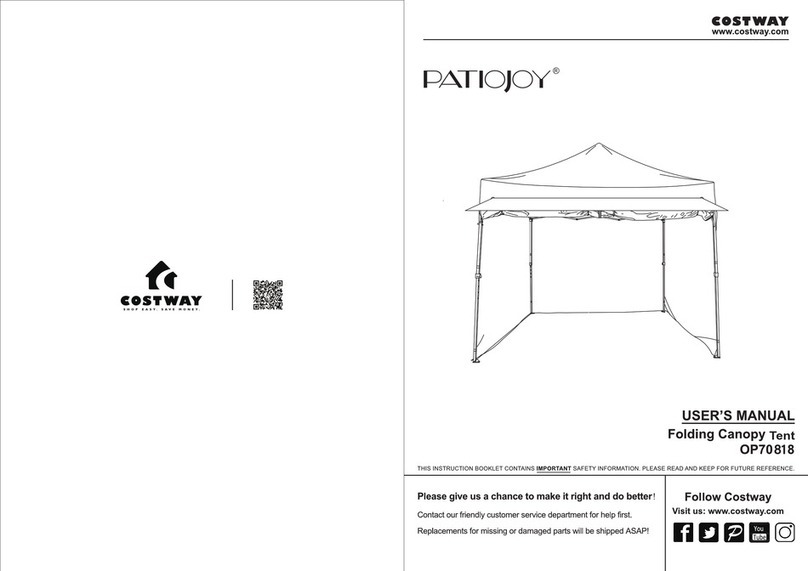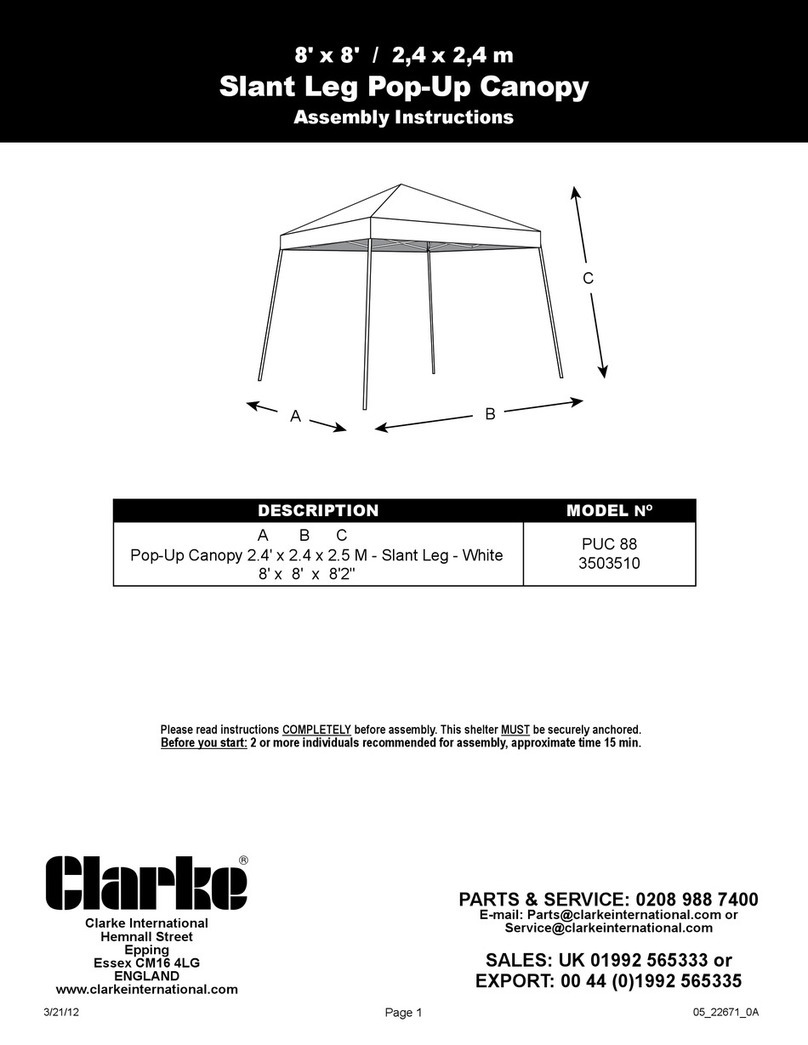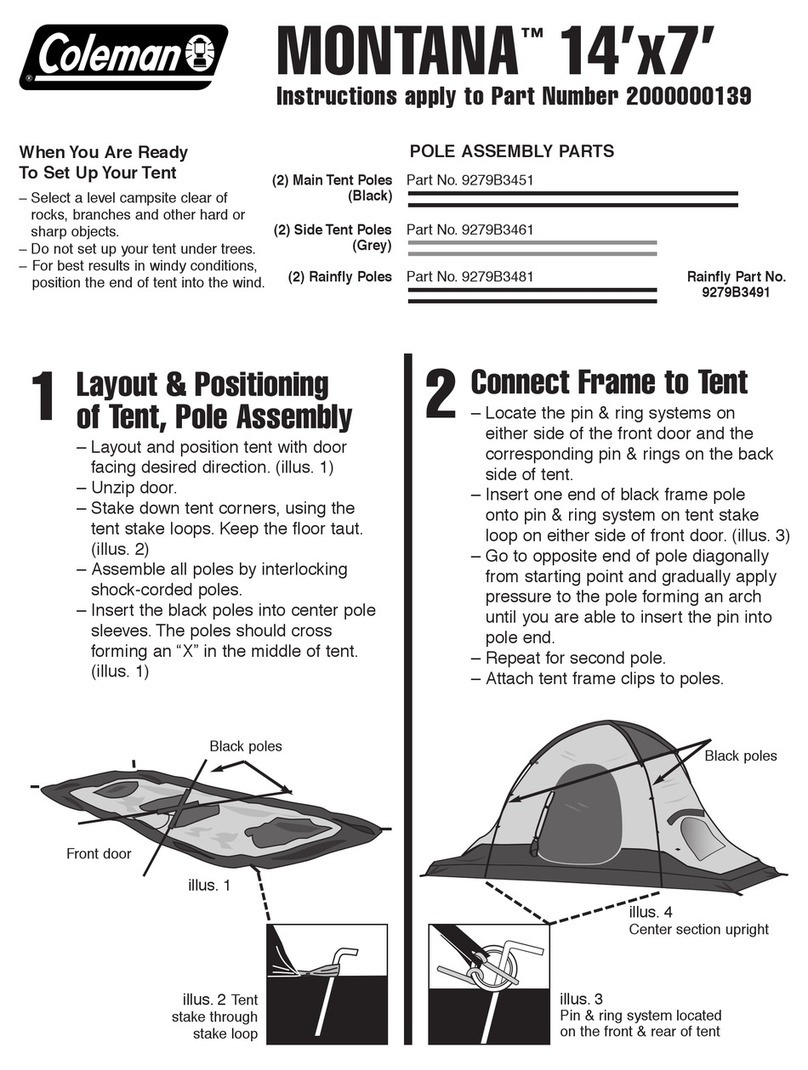
When the poles have been taken
out pull up the possibly remaining
pegs, fold and roll up the tent
around the pole and peg bags.
Make sure that while rolling the tent,
air is gently escaping from it.
You can also simply stuff the tent
into its bag and pack away the poles
and pegs bags by themselves.
If the outer tent is wet detach the
inner from it before taking down the
tent. Otherwise inner and outer can
remain linked and everything can be
packed together.
Drying and caring for your tent
It is important that one does not store a tent without drying it first except for a short
period (during a trip). After use it should be hung in a dry and well-vented spot,
preferably with the poles in place so that the fabrics are kept apart.
Before you pack the tent it should be shaken so that all dirt comes out. Stains
should be cleaned with luke warm water. Check it for damage and repair when
necessary.
Clean and replace possibly lost ground pegs. Check the poles for potential damage.
If the tent needs cleaning use only luke warm water.
Check the zippers and brush these with a small stiff brush when you have used the
tent in a sandy or dusty environment. If zippers are not kept clean their life
expectancy will decrease!
When your tent is dry and checked pack it into its stuffbag. Provided there is room
in your household you could hang the tent in a dry and cool place instead of packing
it in its bag.
Avoid pitching your tent unnecessarily in direct sunlight since UV-light damages all
fabrics. Pitching it in the sun during a trip is nothing to worry about, but do not leave
it in the sun for weeks in your garden.
Poles and pegs should not be packed right on the inside of the stuffbag but rolled
up inside the tent before it is being placed into its bag. Otherwise you risk damaging
the stuff bag.

